My recommendations for the Top 10 Sights in France:
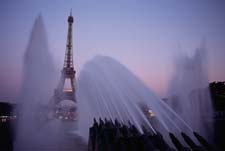
Eiffel Tower (Tour Eiffel) – Paris
The Eiffel Tower, Built in 1889 for the Universal Exhibition to celebrate the centennial of the French Revolution, is now the symbol of Paris. It can be seen from most vantage points in the city, but the view from the Trocadero is simply spectacular. In summer, the lines for the elevator can be very long. You can walk to the first level, (360 steps) or the second (700 steps). There is a change of elevators on the second level, so you go from there to the top if you’d like. There is an observation room on the top level surrounded by glass, so you need not go out in the winds to get the 360-degree view of the city from 1000 feet up. The view from the second level is actually better than on the third. You can see all the monuments and places of interest very well. From the third level, it’s a bird’s eye view, but you can say that you went to the top of the Eiffel Tower! The sight of the tower at night is absolutely stunning and a ride to a lower level at night is quite romantic. To top it off in style, eat at the Jules Verne Restaurant on level 2. It is one of the best in Paris, and priced as such. (Be sure to dress appropriately; this is a fine restaurant) There is also a Tourist Information Booth located at the base of the tower.
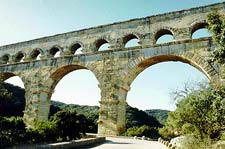
Pont du Gard – Near Nimes
A masterpiece of Roman architecture, the Pont du Gard, constructed around 19 BC transported spring water from near Uzes to Nimes. Constructed without mortar, this bridge, carried 4.4 million gallons of water per day on its top level. The lower levels were bridges over the Gardon River 158 feet below. In disuse since the 1st century, people in the middle ages used the center level as a walkway and later for vehicles. It was restored in the 19th century. Now, visitors can drive across the lower tier and walk across the two upper tiers.
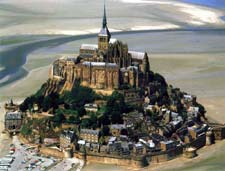 Mont-St-Michele– Mont-St-Michele
Mont-St-Michele– Mont-St-Michele
Linked to the mainland by a causeway constructed in 1877, The Mont-St-Michele abbey rises like a castle in the shifting tides of the sea. The buildings in this isolated island date from the 11th century. Inspired by an apparition of St. Michael, the bishop of Tombe built an oratory on the island, which was followed by even more splendid buildings, all in honor of St. Michael. The tides arrive rapidly and are fierce; visitors are cautioned to take them seriously. The beauty of Mont St. Michele is the view from afar; the island itself has become somewhat of a tourist trap with one souvenir shop after another as you climb to the top of the abbey. The view from the abbey over the sand and sea is lovely, but the best view is of the abbey itself at dawn or dusk from afar.
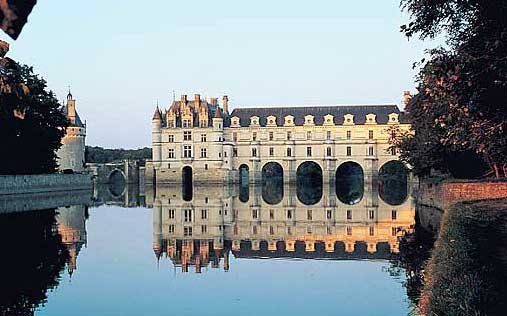
Chateau de Chenonceau – Loire
This wonderful Château is set atop the river Cher. It is one of our favorite chateaux not only because the history is fascinating, but because it has two fabulous Franch gardens. In French history books it is known as Château des Dames because it owes a large part of its charm to women. Built in 1513 by Katherine Briçonnet, it was made more attractive by Diane de Poitiers and Catherine de Médicis, and saved from destruction during the French Revolution by Mrs Dupin. On your visit, you will see Renaissance furniture, a vast ensemble of XVI th and XVII th century tapestries and a great number of masterpieces by Le Primatice, Rubens, Le Tintoret, Rigaud, Nattier, and Van Loo. If you are touring châteaux in the Loire region, do not miss Chenonceau.
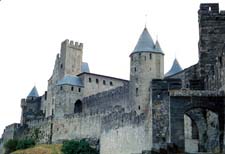
La Cite – Carcassonne
Restored in the 19th century, because of the attentions of historian Viollet-le-Duc, the citadel of Carcassonne looks as it did when it was built by King Louis IX and his son Philip the Bold in the 13th century. This medieval town is complete with a moat, turrets and ramparts. It is a truly a beautiful and moving thing to see the Cite’s golden buildings aglow in the sunlight or the night spotlights.
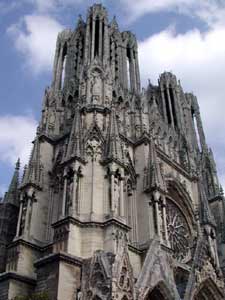
Cathedrale de Notre Dame – Reims
The Cathedrale de Notre Dame is where France’s kings were crowned, from Clovis in the 6th Century to Charles X in the 19th century. The gigantic church was begun in the 13th century, and has been rebuilt and restored over the past one hundred years. Most notable are the windows, such as the 13th century Great Rose Window, displaying the Virgin among angels and apostles, and the Chagall window, depicting the Crucifixion. The cathedral’s intricate facades, including the western side’s Gallery of Kings with more than 2,000 statues, are appreciated for their harmony and beauty.
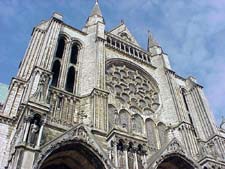
Chartres Cathedrale – Chartres
Built in 1020 and devastated by fire in 1194 the cathedral was soon rebuilt by local citizens and royalty. This stunning cathedral is hailed as one of the most beautiful works of architecture built by western civilization and the most spectacular Gothic cathedral in Europe.
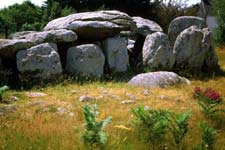
Prehistoric Megaliths – Carnac
Thousands of ancient granite rocks are arranged in different patterns that are still not understood by scientists today. It is thought that there is religious significance to the site, but the placement of the rocks also suggests an astronomical calendar. The rocks were placed by megalithic tribes as early as 4000bc.
The Calanques
These rugged white cliffs jut out into the Mediterranean sea in the south of France, roughly between La Ciotat and Marseilles. They are best viewed by boat. There are several ports that offer short trips to see these beautiful rock formations, Marseilles, and Cassis to name a few.
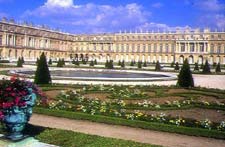
Versailles
Home to King Louis the XIV “the Sun King”, his son Louis XV and grandson Louis XVI , who married Marie Antoinette, Versailles is exquisite opulence. When built, it was the largest palace in all of Europe. After the revolution, it became a museum. The gardens, the fountains and the buildings themselves are the beauty of Versailles. To see the Kings Apartments, which include the king’s lavishly furnished private rooms and the exquisite Opera House, you must pay extra for a Guided Tour. The guided tour allows quick entry and takes 1 ½ hrs.
Be sure to wander in the gardens ( there is an extra fee) and either walk (about 30 minutes) or take a tram ride to the Trianon and Petit Trianon. The Trianon was the king’s retreat from Versailles and le Hameau (an actual working farm) was where Marie Antoinette played at being simple country folk.
When visiting May through early October, the museum offers Fountain shows every Sunday throughout the day. On certain Saturday nights in July, August and September visitors are treated to fireworks and music.


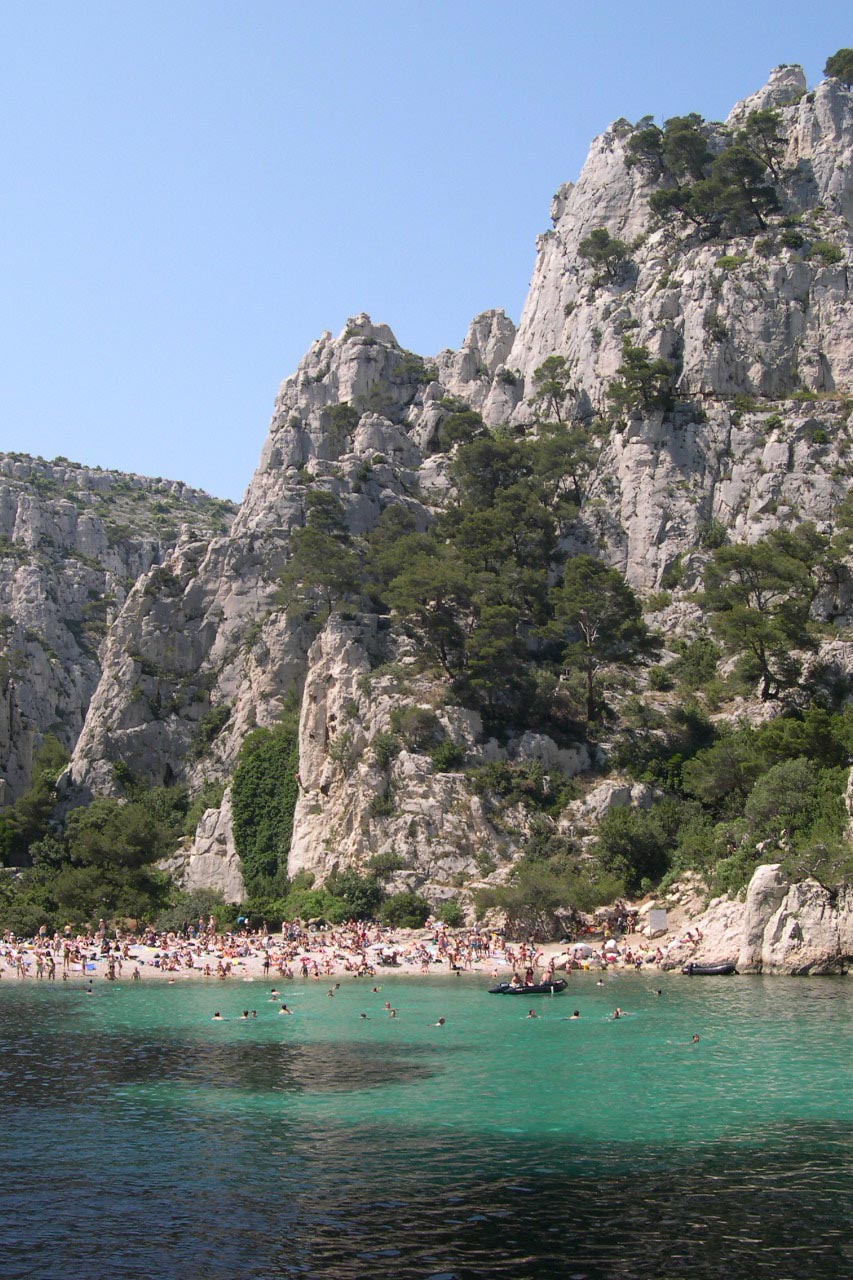
Comments